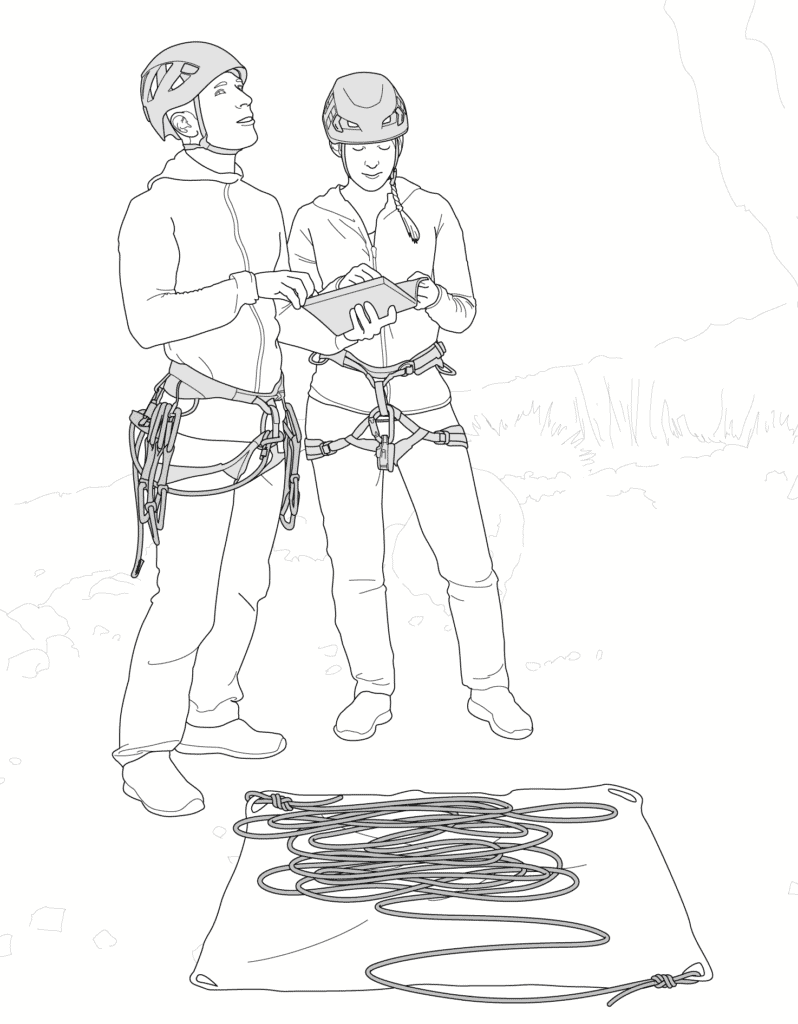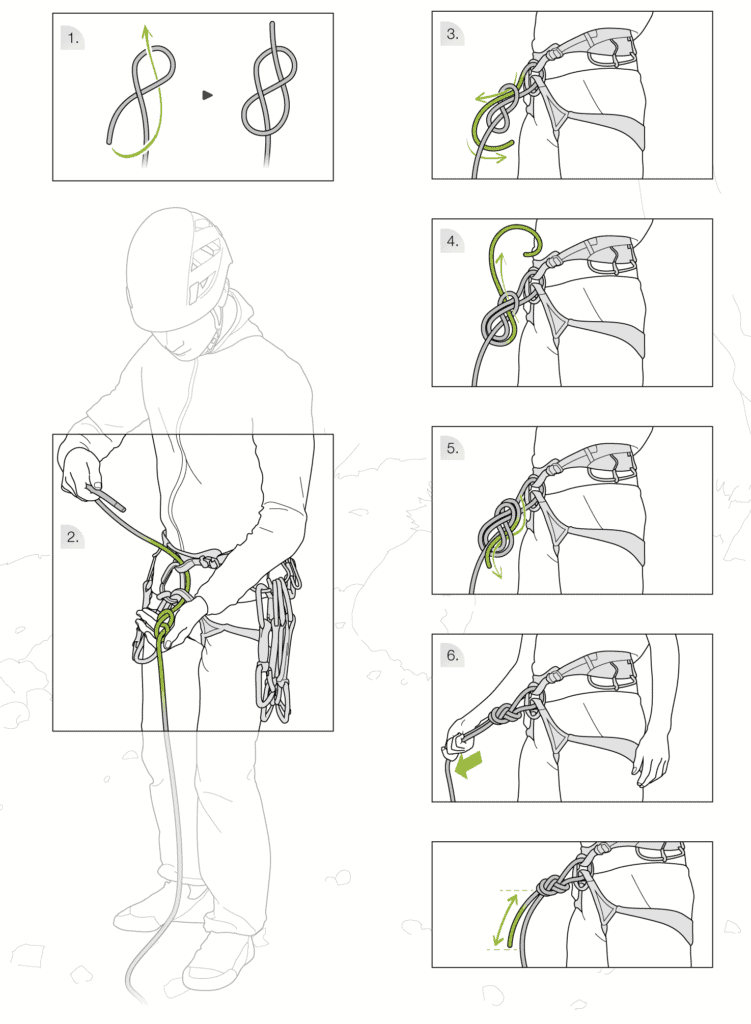At the base of the route, consult this website regarding the difficulty of the route and where it goes.

Basic technical equipment
- Helmet
- Harness
- Rope bag
- Rope: correctly uncoiled to avoid twists, with a knot tied in the end of the rope. Be sure to take a rope that is long enough for the routes you plan to do
- Belay device: assisted-blocking belay device, like GRIGRI or conventional tube-type device like REVERSO
- Locking carabiners: used to connect a belay device to the harness, at the end of a lanyard or for belay station tasks
- Quickdraws: fourteen quickdraws are generally enough for most areas. Be sure to have several lengths. Quickdraws are placed on each side of the harness for easy access
- Lanyard: useful for performing tasks at the belay station (but not indispensable if you master the clove hitch).
- Slings: multiple uses: building a top-rope anchor, extending quickdraws, foot loop in case of difficulty
- Quick links: useful if retreat is necessary
- Topo: like this website, which is compatible with most off-line readers such as Pocket or others, enabling you to consult it when you are out of network coverage, which very often happens in the mountains.
Tying in with a figure 8 knot
Other tying-in knots exist, which are equally good, but figure height is easy to tie-in, doesn’t slip if properly tied-in and, maybe even more importantly, easy for your partner to check, even from a distance.

Partner check


Chinstrap buckle fastened

Harness adjusted to fit snugly

Carabiner connected to the correct place on the harness
Carabiner is locked

The correct knot
Knot finished and tightened

